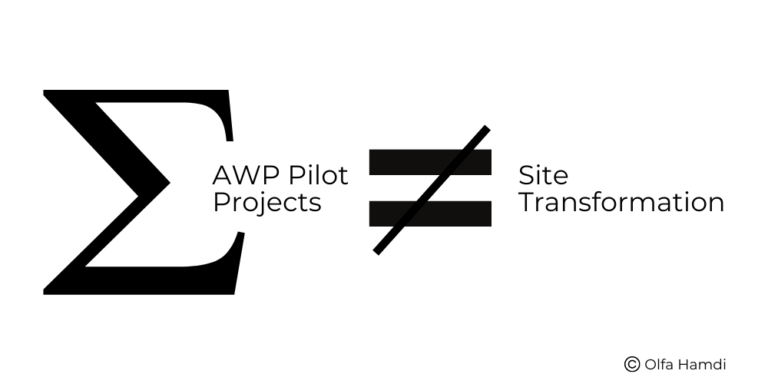We don’t need more lagging measures to help us assess risk, we need a mental model that helps us maintain value creation
I’ve spent my entire career working to develop tools and systems that can help capital project leaders deliver on-time and on-budget. I’ve worked with the Construction Industry Institute and Independent Project Analysis, implementing the Project Definition Rating Index (PDRI) and the Front-End Loading Index (FEL Index) on dozens of projects. I founded the Work Packaging Institute and have applied the cutting-edge Advanced Work Packaging protocols on global projects through my company, Concord® Project Technologies.
Here’s what I’ve learned: We don’t fully know how to deliver capital projects on-time and on-budget. Despite our best efforts to date, most capital projects today still come in significantly late and over-budget. Established project management tools simply aren’t good enough. For the past five years, I’ve been working to figure out where these old solutions fall short, why, and how to fix them. My answer: the Predictability Thinking Framework™.
What is the Predictability Thinking Framework™?
A “predictable” capital project is a project that is delivered on-time and on-budget. To achieve predictability — on-time, on-budget project delivery — we must understand the capital project execution process well enough to develop a fact-based, accurate and reliable understanding of what impacts project outcomes. Predictability Thinking™ is a mental model for how on-time, on-budget capital projects work. The Predictability Thinking Framework™ helps us to learn how to apply that mental model on complex, real-word capital projects.
You can think of a capital project like a car. The FEL Index, PDRI, risk register and other standard risk measurement tools are like items on your dashboard. They are designed to measure risk. The Predictability Thinking Framework™ is the steering wheel. It is designed to help you adjust the entire project execution system in real time so that you arrive at your destination on-time and on-budget.
Why is Predictability Thinking Necessary?
We know that existing capital project management models are flawed because the vast majority of projects are late and over-budget. In his 2016 book, Capital Projects, veteran project consultant and IPA director Paul Barshop says projects that meet the stage-gate process requirements deliver expected value, and meeting all stage-gate requirements can add up to 5% more value than forecasted. However, projects that only met some requirements saw 22% value erosion, and those that did not meet any requirements saw 45% of the projected value erode. He uses this data to argue that the stage gate system works, but I see data that shows that unless you execute with flawless precision, you can lose up to half of your forecasted value. It’s an all-or-nothing approach; we need a better system.
This is because they are designed to measure risk, but we use them to measure outcomes. Value is not destroyed at each stage gate, we destroy it slowly, cumulatively, through the entire course of the capital project. We don’t need more lagging measures to help us evaluate and assess risk, we need a mental model that helps us maintain value creation on a continuous basis. We need Predictability Thinking™.
The Errors and Biases the Keep us Stuck
Predictability Thinking™ is the result of our quest to better understand where existing tools fail. The goal is to open a space where we can start looking at capital project outcomes from a humble, statistically sound, rational, dynamic and comprehensive point of view. The first step to doing this is to better understand how existing tools fall short.
1 | Our sample sizes are too small.
Nobel prize-winning psychologist Daniel Kahneman has written at length about biases that distort our reasoning and cloud our perception of reality. One of the logical errors he explores in his book Thinking, Fast and Slow is our insensitivity to small sample sizes. “Extreme outcomes (both high and low) are more likely to be found in small than in large samples,” he writes. “This explanation is not causal.”
Capital projects are unique, highly complex human endeavours and it is difficult to collect a sample large enough to draw reliable conclusions. This is especially true when data is collected manually. In short, unless we have a semi-automatic or automatic way of collecting project data to build a large database of project data, the likelihood of accuracy of benchmarks derived from current project databases is very low.
2 | Regression to the mean.
Kahneman also explores regression to the mean, a more complex concept with important implications for capital projects. Essentially, the regression to the mean tells us that in complex situations with lots of variables and an element of chance, extreme outcomes tend to be followed by more moderate outcomes. With current approaches, a capital project delivered on-time and on-budget is an outlier, and we’ll continue to see a regression to late, over-budget projects so long as our true ability hasn’t changed.
3 | We don’t know what we don’t know.
Donald Rumsfeld’s most famous sound bite has big implications for capital projects as well. In one of the most memorable quotes of the Bush administration, the former secretary said:
“As we know, there are known knowns; there are things we know we know. We also know there are known unknowns; that is to say we know there are some things we do not know. But there are also unknown unknowns—the ones we don’t know we don’t know.”
It is the last in this list that concerns us most with capital projects. Consider an organization that is piloting Advanced Work Packaging for the first time. The very fact that they’re implementing these unique processes for the first time is an enormous unknown unknown — they do not know what they do not know about how AWP will impact their existing systems. Established capital project management approaches that fail to accommodate unknowns do not provide the support that organizations need to deliver on-time and on-budget. This is part of the reason we say that the sum of your AWP pilot projects does not equal site transformation.

We often hear from clients and industry leaders that Predictability Thinking™ and the Predicability Thinking Framework™ have provided the missing pieces of the puzzle when it comes to delivering on-time, on-budget projects with traditional capital project management tools. If you’re interested in learning more, the Concord® team is here to help. Book an appointment with Olfa today.





